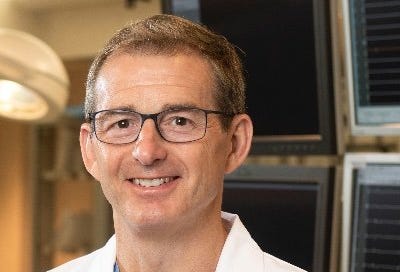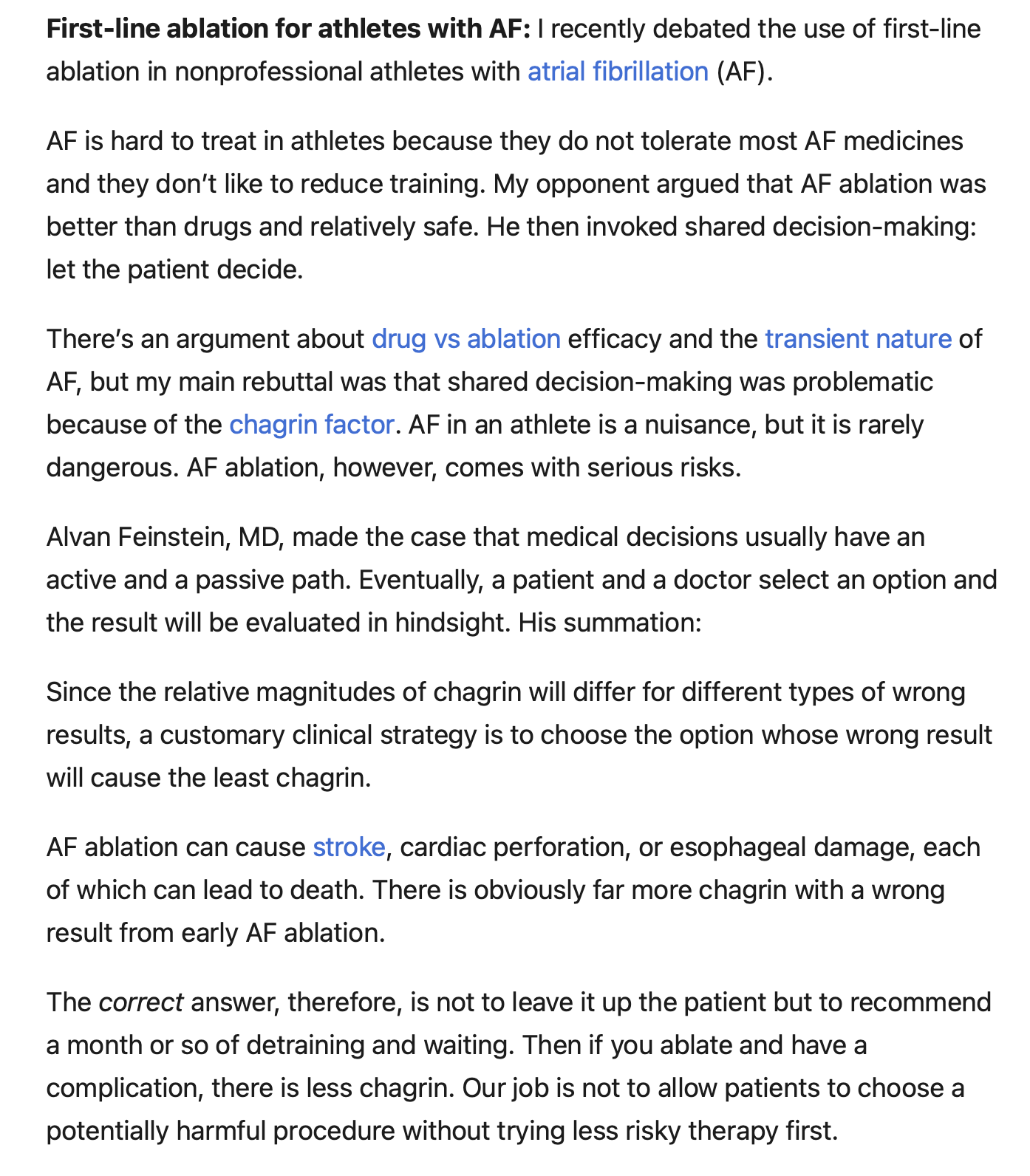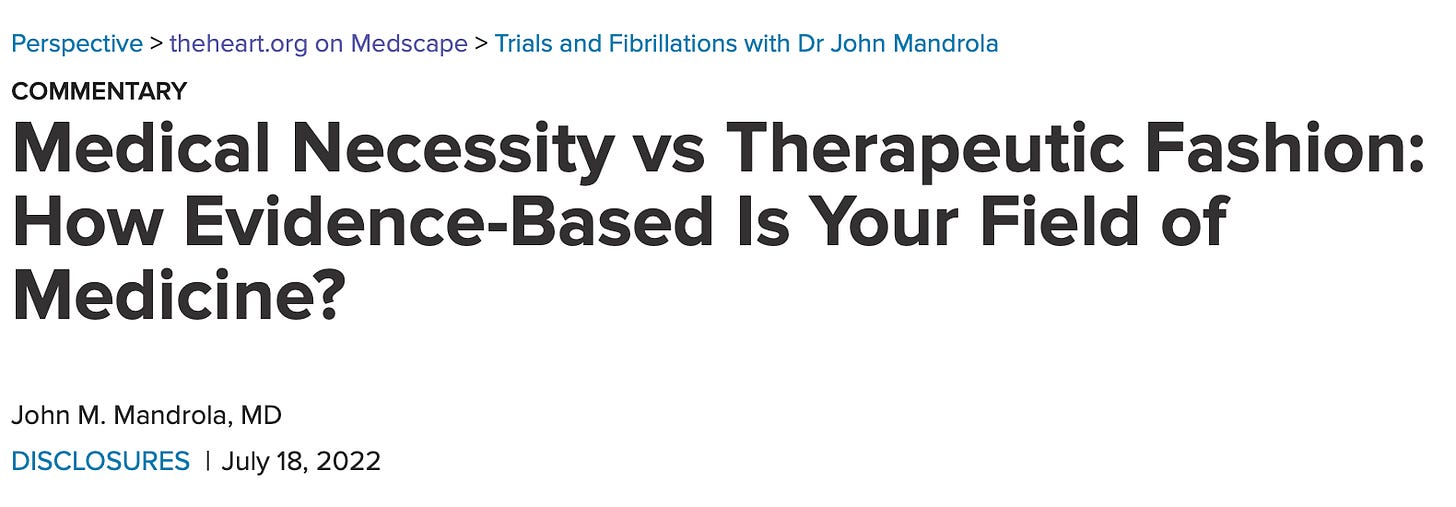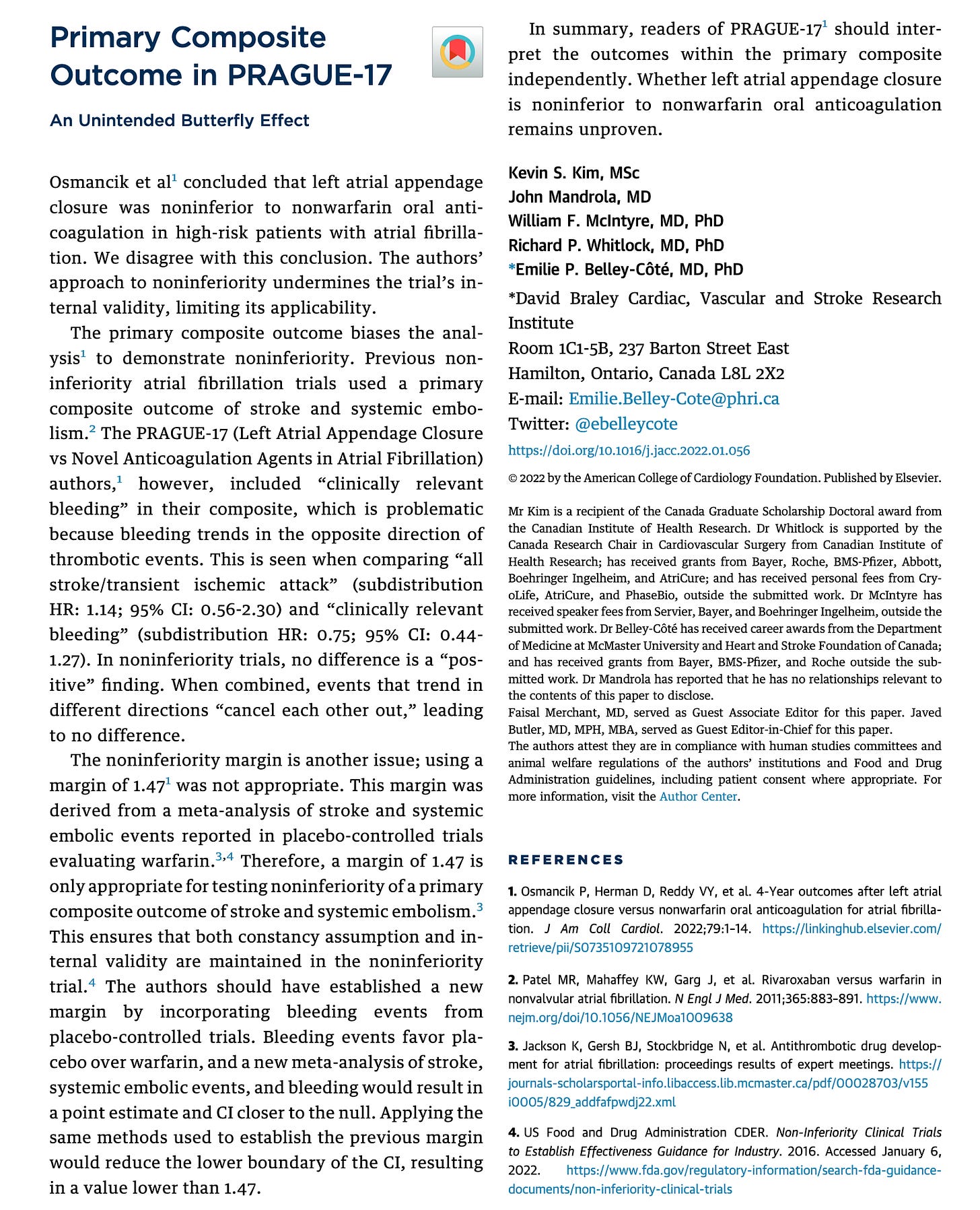Shared decisions, therapeutic fashion, fear, the illusion of control, non-inferiority trials, trustworthy guidelines and the #TWICPodcast
Perhaps I should try to keep track of the content I am putting out there. Here is a July review--with some brief comments.
Shared Decisions:
I have changed my mind about the basket term “shared decision-making.” The basic idea is that a doctor-patient interaction is a meeting of experts. Doctors are expert in medical science and patients are expert in what is important to them.
My column on theheart.org | Medscape Cardiology explores the problems with this overly simplistic notion. I used examples of shared decision making gone awry to make my point. Here is one, for readers who have an interest in AF and exercise (Links in the post above.)
Therapeutic Fashion:
I recently had a brief bout of frustration with how some medical norms become ensconced and then utterly resistant to citation of the dubious data underpinning these practices.
Always remember that use of evidence is what separates doctors from palm readers. Yet, as I wrote in the linked column below, “I've come to believe that too often therapeutic fashion trumps medical evidence.”
I argue that therapeutic fashion is something doctors (and patients) ought to be thinking about. In the piece, I used examples of therapeutic fashion, considered its causes, and showed why it can be hazardous.
Stop and Think has previously touched on one of the best of examples of dubious therapeutic fashion—cooling after cardiac arrest.
Non-inferiority Studies and Left Atrial Appendage Occlusion
Almost all of you know that I remain unconvinced that the therapeutic fashion of placing foreign bodies in the left atrial appendage to prevent stroke provides a net benefit. My lecture—one that I have given on 5 continents—is linked on Stop and Think.
Proponents of left atrial appendage occlusion have been citing a trial called PRAGUE-17, which compared LAA occlusion vs modern oral anticoagulant drugs, and produced findings favorable to the device.
I’ve met the lead author Pavel Osmancik, and I really like him. He’s a nice man and I suspect a really good doctor. But his study has serious limitations. (BTW, this is often the case: trial authors are good people, but trial results still come with serious limitations.)
To their credit, the Journal of the American College of Cardiology published a critical letter to the editor that I co-authored with a distinguished group of scientists from McMasters University.
First author, Kevin Kim has this excellent thread:


My friend Vinay Prasad has published a nice primer on non-inferiority trial design.
This Week in Cardiology Podcast:
There were 3 episodes of the #TWICPodcast this month.
July 8th, I discussed controversies in a recent fish oil trial, America’s heart health, pharmacists and prescribing and statins.
July 15th, I hit on how multi-morbidity affects evidence translation, cardiac arrest and therapeutic fashion, diabetes and cardiology, and, gulp, cuts in reimbursement for my field of electrophysiology.
July 22nd, I addressed therapeutic fashion and conduction system pacing, early rhythm control in AF, statins in kidney disease and salt intake in patients with heart failure.
Fear and the Illusion of Control
My first post for the Sensible Medicine Substack considered the two major causes of poor medical decisions. Fear is one; the illusion of control is the other.
I hope you will give Sensible Medicine a chance. I really really think Healthcare (with a capital H) would benefit from healthy doses of diverse opinions. That is our goal.
Do me a favor—judge Stop and Think and Sensible Medicine on only one thing: the content.
Guidelines:
Much of what doctors do is codified in guidelines. Professional organizations often sponsor these documents—which seriously bolster the influence of the included recommendations.
The question is how neutral are these documents? Sometimes not so much.
Along with an international group of scientists, surgeons, and physicians, I co-wrote this piece in the Journal of the Royal Society of Medicine on the path to trustworthy guidelines. Here is a screenshot from our paper.
I am proud to be associated with this diverse group. We are working towards a more neutral approach to the practice of medicine.
Thanks for reading. JMM







I hope you have some oncologist talking about prostate cancer
John
Your questioning and analysis is educational. Are you able to incorporate your information into the Healthcare education of future Practitioners?